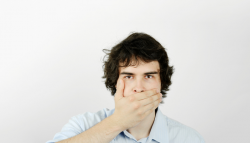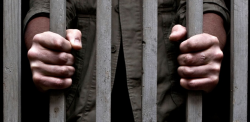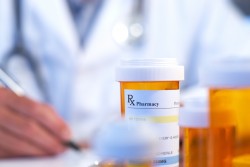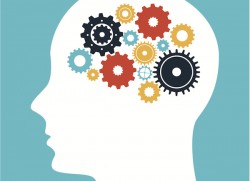Although there is still some confusion as to whether mental health issues cause substance abuse or if substance abuse causes mental health issues, most scientists are beginning to agree that it is both. According to the Department of Health and Human Services, mental health issues and substance abuse commonly occur together. There are a few types of disorders that are more prevalent among those that abuse substances. These types fall into the categories of depression, anxiety, schizophrenia, and personality disorders.
Depressive Disorders

Depression and substance abuse disorders often co-occur.
Depression is very common when it comes to substances abuse. People who suffer from a depressive disorder often use drugs to self-medicate. When someone does this it, it often makes the disorder worse rather than better. Although there are several individual depressive disorders most of the symptoms are the same. These symptoms are:
- loss of interest in normal activities
- energy loss
- insomnia
- over sleeping
- feeling worthless
- low self-esteem
- suicidal thoughts
- changes in weight
- intense sadness
People who experience these symptoms and are addicted to a substance need help immediately. You can find the help that you need by calling 800-487-1890 (Who Answers?) . We can find you the treatment that you need in order to defeat both the drug use and the disorder.
Anxiety Disorders
Anxiety disorders encompass a broad range of conditions. Most of these conditions are characterized by:
- fearful responses to situations that are out of context
- uncontrollable panic and fear
- altering your personality, responses, and lifestyle to accommodate the fear
- panic attacks
Anxiety disorders are often found as the cause of the addiction, as a result of not having the drug, and as a result of withdrawal. A few of the anxiety disorders many people experience are:
- OCD or obsessive compulsive disorder – characterized by obsessive disturbing thoughts that you cannot get rid of no matter how hard you try
- panic disorder – mainly characterized by panic attacks, some so severe they mimic a heart attack
- phobic disorder – an irrational feel of a thing or situation
- PTSD or post traumatic stress disorder – an anxious response to trauma that gradually invades a person’s life. A PTSD episode can happen anywhere at any time. Drug abuse itself can cause PTSD.
Schizophrenic Disorders
Schizophrenic disorders are sometimes dangerous. There are a variety of types of schizophrenia that cause substance abuse. People use drugs to quiet the symptoms of schizophrenia. Each type of schizophrenia has its own symptoms.
- paranoid schizophrenia – the person suffering from this feels that everyone and everything is out to do them harm
- hallucinatory schizophrenia – this person hallucinates voices, people, and a variety of other things
- delusional schizophrenia – this person believes they are something or someone that they are not
These disorders can overlap to form complex schizophrenia. Most schizophrenia is controllable by taking prescription medication to keep the symptoms at bay. Unfortunately, there are many undiagnosed schizophrenics who take to self medicating with illegal drugs.
Personality Disorders
Personality disorders are a complex set of behaviors that often manifest in violent or sociopathic ways. Many people medicate to deal with the absence of real feeling. They want to feel something so they take illegal drugs. Fortunately, with the right treatment personality disorders often get better.
If you are taking drugs to alleviate any of these conditions, it is extremely important that you seek treatment for both the mental health issues and the substance abuse problem. You can do this by calling 800-487-1890 (Who Answers?) . We can help.
With millions of addicts in the world, it is possible that you might end up living with one of them. Fortunately, according to the Department of Health and Human Services, there are some signs that you can watch out for that will help you decide if you are living with someone with a substance abuse problem.
1. They are Secretive about What they are Doing
Although being secretive is not always a sign of drug abuse, it is a clue. People who are addicted to a substance try to hide it. In trying to hide it they appear secretive and often do things like hang up the phone when you walk into the room or neglect to tell you where they are going.
2. They Take Inappropriate Trips to the Bathroom

A drug addict will likely display secretive behavior in order to hide their use.
Many people get high in the bathroom. When someone goes to the bathroom and comes out acting different usually it is a sign that they were getting high or drunk in there. Sometimes they excuse themselves to go to the bathroom and then take a very long time and sometimes they do not make it to the bathroom at all but to a dark corner of wherever you are at.
3. You Find Semi-hidden Paraphernalia
There are a lot of things that qualify as drug paraphernalia. Anything smooth surface with white powder on it or rolled up straws or bills are a good indication that they are using drugs. Also people who have pipes or needles around the house are generally drug addicts.
4. They Exhibit Erratic Behavior
People who are on drugs are usually erratic. They do things that do not make sense or seem confused. Depending on how bad the addiction is, they may act strange most of the time. They might take risks one minute and then seem anxious the next.
If the person is taking risks and they are a danger to themselves or others it is important that you call 800-487-1890 (Who Answers?) . We can help you find treatment for them immediately. People who are on drugs can easily hurt themselves or you without meaning it.
5. They have Strange Mood Swings
Along with erratic behavior, a drug addict’s mood changes very quickly. One of the classic signs of addiction or substance abuse is mood swings, particularly when they haven’t had the drug or alcohol in a while. They might go from happy to angry in a flash or from peaceful to sad.
How to Talk to Someone Who is a Substance Abuser About Their Use
6. Their Appetite Changes Drastically
Changes in appetite is also a good sign that they are using. They might eat too much or stop eating all together. Many drugs make you either gain or lose an appetite. If you suspect someone is taking drug watch for drastic changes in their eating habits.
For more information on how to tell if the person you are living with is on drugs or to find a treatment center near you call us at 800-487-1890 (Who Answers?) . We can help you find the treatment you or a loved one needs.
If you or a loved one are struggling with either depression or addiction, or perhaps even both, you may be wondering what the relationship between the two illnesses is. Does addiction fuel depression, or perhaps the other way around?
Comorbidity Between Depression and Addiction
According to NIDA, comorbidity is when an individual suffers from two or more disorders or illnesses at the same time, such as depression and addiction. They also report that many people with addiction are also diagnosed with mental disorders, and vice versa.
Addicts are twice as likely to suffer from anxiety or depression compared to the general public, and the reverse is also true. The studies reported on NIDA show that a very strong correlation exists between addiction and mental illnesses, but that just raises questions of causation. Which one comes first? Does having one guarantee the other?
Each Share Anatomical Pathways

An addiction can develop as a result of self-medicating depressive symptoms.
According to NCBI, the reason that the link between these two illnesses is so strong is due to the many neurological mechanisms and pathways shared by each disease. There are countless overlapping vulnerabilities and triggers for individuals who suffer from either of these illnesses, so the possibility of getting the other illness is very high.
So while neither of these illnesses specifically comes first, it is not uncommon to see the other follow closely behind. Individuals with substance abuse issues are often prone to display symptoms of mental illness, and this overlap can often make it difficult to diagnose multiple issues occurring.
Depressed individuals may also rely on alcohol or drugs to suppress their symptoms, and as a result find themselves with an addiction. Due to how much mental illness and addiction overlap, there are dangers of strengthening both illnesses as they interact. If you believe that you or a loved one may be suffering from comorbidity, call 800-487-1890 (Who Answers?) to speak with a specialist about treatment.
How Can Comorbidity be Treated?
When it comes to diagnosing comorbidity, it can be difficult to distinguish from a tangled web of illnesses which came first, or even how many illnesses one person suffers from. However, since they often have overlapping symptoms and challenges, many treatments for these illnesses also overlap.
Overcoming comorbidity often involves behavioral therapy, counseling, and other techniques specific to your circumstances. Medications also exist that are intended to help you deal with the symptoms of both illnesses, but a primary goal is not just to deal with symptoms, but to eliminate the illnesses altogether.
Since addiction and depression often go hand in hand, it is important to tackle both of them at once, in order to reduce the chances of relapse in the future.
If you or a loved one are struggling with addiction or comorbidity, call 800-487-1890 (Who Answers?) to speak with a caring specialist about any of your questions or concerns. If you are unsure what your next steps should be, a professional can help guide you towards your path of recovery.
Depression and Anxiety: The Role They Play in Substance Abuse
People who have been arrested due to criminal activity that was drug-related may find that it is very difficult to stay clean. Prison does not allow for much access to drugs or alcohol, which makes the recovery that much easier but on the outside, drugs and alcohol are much easier to get ahold of, thus providing more of a temptation. However, there are many ways an ex-prisoner can maintain their recovery.
Substance Recovery Groups
When an addict is in the first stages of recovery outside of prison, it can help them to find a support group to help them adapt to their new surroundings. Groups like Alcoholics Anonymous, Narcotics Anonymous, and Celebrate Recovery can be especially useful.
Each of these holds a 12 (or 8 for Celebrate Recovery) step program that is designed to help the addict to maintain their recovery.
Seek Individual Counseling

It can be difficult to avoid temptation once released from prison.
The recovering ex-prisoner may benefit from a sponsor or individual counseling even after prison in order to get the help they need. A counselor will be able to help the individual to learn how to adjust to life on the outside, and teach him or her how to cope with the temptations that can arise.
So long as he or she practice these methods in their day-to-day activities, they should remain clean. For those moments of weakness where the addict may not know what to do, a sponsor may come in handy because they will be able to help him or her through the tough moment anytime, day or night.
Know What to Avoid
According to the NCBI, former inmates are exposed to an abundant amount of drugs, alcohol, and drug trafficking in their lives and those who were found to be homeless had it particularly hard to avoid them. When a former substance addict and ex-prisoner are released from prison, it can be hard to avoid the temptations that are brought forward.
Counseling is the first big step in the journey toward recovery and sponsors can help provide support along the way, but the ex-prisoner should also make the effort to avoid the triggers of their addiction. People, things, and situations that can trigger a relapse or bring back the addiction should be avoided in order to reduce the risk of losing their new life of recovery.
Support for their Recovery
It is important to make sure that the recovering addict has plenty of support from friends and family. When they are surrounded by loved ones who want to help them get better, it can boost their hopes of remaining sober and remind them that they are not alone in their journey. According to SAMHSA, the recovery process is supported by family members, who can become the champions of that recovery.
Readjusting to life after prison is hard enough, but when also recovering from an addiction it can become nearly impossible. There are a few options to help the process along, such as support groups, sponsors and counseling, being aware of what to avoid, and for the recovering addict to be supported by their loved ones in their time of need.
If you or a loved one is suffering from an addiction before, after, or during prison and needs help, call 800-487-1890 (Who Answers?) to speak with a caring specialist that can assist you.
If you use drugs regularly you might be wondering whether you are an addict or not. According to the National Institute on Drug Abuse, illicit drug use and addiction is on the rise all over the country so it is not surprising that more people are wondering if they’ve become an addict. Most of this use begins recreationally, but quickly becomes an addiction.
1. Do you Use Drugs to Escape Your Problems?
Most people start out using drugs to have a good time. However, this quickly degenerates into using the drugs to get away from stress and shame caused by the drug use. This is addiction.
2. Do you Crave Drugs when you Do Not Have Them?
Drugs fundamentally change the chemical makeup of the brain. They so imbalance these chemicals, that the brain believes that it needs the drugs to function, resulting in cravings.
3. Do you Feel Out of Control on the Drugs?
Any time that you are no longer in control of yourself and your actions, you have a very real problem. If this lack of control is because of a substance of abuse, you have an addiction.
4. Do you go into Withdrawal if you Stop Taking the Drugs?
Illness, pain, seizures, and insomnia when stopping the use of a drug is symptomatic of withdrawal. This is one of the hallmarks of addiction.
5. Have you Built Up a Tolerance to the Drugs?

If you experience withdrawal symptoms when not on the drug, you are most likely addicted.
If you have to use more and more of the drug in order to get the desired effect, you are developing a tolerance. Tolerance is one of the first signs of an emerging addiction.
6. Do you Get Anxious when Faced with the Prospect of Running Out of the Drugs?
Once dependence and addiction has taken hold, just the thought of running out of your chosen substance of abuse will create fear and anxiety. It will also create a drive to get more.
7. Do you Find yourself Doing Things that you Would Not Ordinarily do to get the Drugs?
Addictive substances are very powerful, and create a very real physical and psychological need for them in order for you to function. This often drives users to commit crimes, prostitute themselves, or hurt their loved ones in order to get the drugs they need.
8. Do you Lie About your Drug Habit?
It is not uncommon for addicts to try and hide their addiction from others. This is due to shame, remorse, and a fear that someone will make them stop.
9. Do you Suffer from Anxiety or Depression when you are Not on the Drugs?
One of the signs of withdrawal is severe anxiety and depression. If you are suffering symptoms of withdrawal, you may have an addiction.
10. Has your Family Questioned your Behavior?
Those that care about you most are often the most forgiving. If your drug use has reached a point that they feel they need an explanation, or attempt an intervention, you may be addicted.
11. Have you Ever Blacked Out while on the Drugs
With increasing tolerance, and less self-control, many drug abusers find themselves taking so much of a drug that they black out. This is a very dangerous situation, and a sure sign that you have an addiction.
Steps for Taking Responsibility for Your Life and Overcoming Addiction
12. Have you Been Arrested while on Drugs?
Addicts often have no real control over their actions while under the influence. Many times, this leads to legal trouble.
13. Do you Feel as if you Cannot Live without the Drugs?
Tolerance to drugs will lead to dependence, where you actually need the drugs just to function normally. If you reach this point, you are an addict.
14. Are the Drugs Ruining your Life?
If you have lost your job, health, friends, home, or family because of your drug use, then you have let the drugs take over to the point that they are ruining your existence.
15. Do you Think you Need Treatment?
If you have ever asked yourself whether or not you have a problem, then you do. Once you have an addiction, the logical next step is to get the help you need to beat the addiction and get your life back. Give us a call at 800-487-1890 (Who Answers?) , today. We can assist you by answering questions, and directing you to treatment services in your area.
According to the National Institute on Alcoholism and Alcohol Abuse, around 86 percent of people 18 or older use alcohol. Of these people, around 7 percent will have an alcohol use disorder. Although 7 percent might not seem like much, it does mean that chances are you will encounter someone with alcohol use disorder.
It is possible that you will wind up living with one. Alcoholism is extremely hard on the people who are around the alcoholic. Fortunately, there are some things that can help you deal with the alcoholism without ruining your relationship.
1. Do Not Try to Discuss their Addiction when they are Drunk
Discussing something as serious as addiction is not possible with someone who is impaired. It will only start an argument. The last thing you want to do is argue with a person that is drunk. The arguments can turn violent very quickly.
2. Avoid using Negativity to get them to Change their Behavior
Negative reinforcement and nagging do not work to help someone change their behavior. The more that pressure someone the more likely they are to go the opposite direction.
3. Stop Blaming yourself and Do Not Let the Alcoholic Blame you Either
Blaming yourself is futile, as is allowing them to blame you for their problem. Many alcoholics will try to divert the blame to you. Their choices are never your fault.
4. It is Not About you, Do Not try to Make it About you
Just like blaming yourself or allowing them to blame you, you cannot personalize their addiction. The truth is it is their addiction and really has nothing to do with you other than you are around them.
5. Get Out Without the Alcoholic

Attending Al-Anon meetings can help you to better understand alcoholism while at the same time gaining a support network.
Having your own life away from the alcoholism is extremely important. It helps you distance yourself from the disease. It is healthy to get out without the disease following you.
6. Set Some Boundaries and Keep Them
The person you are with is an alcoholic, they need boundaries. You cannot let them take what you are not willing to give, setting boundaries helps to prevent this.
7. Do Not Cover for The Addict
The mistakes of the alcoholic are the alcoholics alone and do not reflect on you. There is no reason for you to constantly cover up what they are doing. Not covering for them might also lead them to seek treatment.
8. Make Sure that you Protect Yourself if the Alcoholic Becomes Violent
Alcoholics are often violent. There is no reason for you to be abused. If you are in an abusive relationship with an alcoholic get out until they agree to seek treatment. There are domestic violence organizations that help people in this situation.
9. Find your Own Support Network
You need a support network of people who you can talk to about the alcoholism. This network can be made up of your friends and family or you can join a support community such as Al-anon. A support network should consist of people that you can turn to when you need to about the alcoholism and your feelings. It is important that they are nonjudgmental and listen to what you are feeling.
10. Do Not Drink Too Much Because of Them
Drinking too much because of the person who is an alcoholic will lead you to become an alcoholic yourself. Try to avoid keeping up with the alcoholic when they are drinking, it will not help you understand them any better.
11. Try to Keep a Loving Home Despite the Alcoholism
If there are other people in your home, do not cater just to the alcoholic. Treat the alcoholic as you would any other member of your family. Invite them to the same events and exclude them from the same things that you exclude other family members from. This keeps the alcoholic from being isolated and makes them more likely to seek treatment.
12. Talk about the Alcoholism in an Open Manner
Do not hide the fact that the person in your home is an alcoholic. If the discussion warrants it, discuss alcohol or alcoholism normally. Avoid being too emotional about it but do not hide the fact that they are on alcohol or drugs from anyone either.
13. Do Not ask the Alcoholic to Make Important Decisions when you Know they are Drunk
If someone is drunk then they should not be making any important decisions, their thought processes and judgment are impaired. They can easily make a major mistake if they make the decision at all. The action is often futile and can cause an emotional outburst.
14. Find things to do with the Alcoholic that Do Not Involve Alcohol
Doing things that do not include alcohol encourages the alcoholic to slow down on their drinking. This helps them have a chance to experience fun that does not involve alcohol. This does not mean that you can expect the alcoholic to be completely sober when you go, it just means that you are in a place where they do not serve alcohol, doing an activity that does not involve alcohol.
15. Encourage the Addict to get the Help that they Need
Even though talking to them when they are drunk is a bad idea, you do need to make your desire for them to get treatment known. Whenever possible encourage them to get the treatment that they need. For more information on treatment for alcoholism or drug use call 800-487-1890 (Who Answers?) . We can help.
According to the National Institute on Drug Abuse’s National Survey of Drug Use and Health, there are several drugs that are more likely to be abused than others. Those ranked among the top 10 commonly abused drugs are:
1. Alcohol
Over 87% of people age 26 use or abuse alcohol in their lifetime. Alcohol addiction and abuse causes a variety of ill effects to all of the body systems. It is one of the main sources of addiction in both the United States and the World.
2. Nicotine
Over 68% of the people in the United States have tried some form of nicotine by age 26. This includes:
- cigarettes
- pipes
- cigars
- smokeless tobacco
- e-cigarettes
Again, this is a highly addictive legal drug that many people try due to easy access and media.
3. Marijuana

Prescription opiates are one of the most commonly abused substances.
The fact that marijuana is being legalized in some areas does not make it any less addictive or dangerous. Over 45% of people age 26 have used or abused marijuana in their lifetime. Although marijuana is not typically physically addictive it is psychologically addictive.
4. Cocaine
Cocaine ranks high on the list at over 16% use or abuse in people age 26. Cocaine was extremely popular in the 1980s but has declined in recent years. It is extremely an extremely addictive stimulant.
5. Heroin and Prescription Opiates
Heroin and prescription opiates account for around 15% of drug addiction and abuse in people up to age 26. In recent years the awareness of prescription opiate abuse and its link to heroin has become a focal point of addiction science as more of those prescribed opiates are showing signs of severe addiction.
6. LSD
Surprisingly over 11% of the people try LSD by the time they are 26. Although LSD is not known to be physically addictive, doctors have identified a profound psychological addiction to it in some cases.
7. Tranquilizers
Tranquilizers are another popular drug that people abuse. Over 9% of people have tried taking tranquilizers in a recreational setting by age 26. Doctors prescribe tranquilizers for anxiety, insomnia and a variety of other conditions. People who abuse them either take more than prescribed or take someone else’s prescription.
8. Inhalants
Around 8% of people have tried some form of inhalant by age 26. This includes paint, glue, whippets, and other aerosols. Inhalants are extremely dangerous due to the complications of inhaling toxic substances. When you inhale toxins you risk respiratory arrest.
9. MDMA
Although it is popular in the media, MDMA is only tried by around 6% of the overall drug use among people by age 26. This is a significant change from the previous years. It is not a physically addictive drug but can be extremely psychologically addictive.
10. Methamphetamine
Methamphetamine is an extremely addictive drug. It causes massive body damage and many of the people who try it become addicted. Among people age 26 and younger only about 5% have tried it.
Where to Find Help for these Addictions
You can find help for any one of these addictions at a treatment center near you. For more information call us at 800-487-1890 (Who Answers?) . We can help you find the treatment that you need.
Cocaine acts on your brain the way a lot of other drugs do: it interrupts your body’s natural pleasure cycle. Your brain produces a chemical called dopamine and—normally—when your brain encounters something it likes, it releases that dopamine, which sits on some receptors that let the brain feel happy.
Normally, the dopamine would then be recycled. But, cocaine doesn’t allow that and more and more dopamine comes to sit on the receptors. That’s why you feel so happy when you take cocaine. You are getting a huge dose of dopamine.
Removing the cocaine from your system and abstaining from it will help to deal with your brain’s changes in functioning, but it won’t deal with all of the behaviors your addiction developed or the patterns that can lead you back to addiction. That is why proper treatment involves more than detox. You should go on to have therapy and one common therapy mode for dealing with cocaine-addicted individuals is called cognitive behavioral therapy or CBT.
CBT

CBT provides skills training so that cocaine addicts can learn strategies to change their behavior.
CBT acts based on the assumption that the development and continuation of a cocaine addiction is based on learning processes and that these same processes can be used by individuals to reduce and/or end their drug abuse. Therefore, CBT acts as short-term, focused therapy, where you learn to recognize when you are most likely to use cocaine, avoid these situations, and cope with the problematic behaviors that accompany cocaine addiction.
CBT is promising for many reasons. It is a short-term approach that fits into most treatment plans, and it has been thoroughly researched and found in clinical trials to be effective at treating cocaine addicts. CBT is structured and goal-oriented, so results are seen quickly, and this can keep you motivated. It is also flexible and is adapted to you specifically.
If these ideas sound appealing to you and you are interested in seeking out a treatment program that includes CBT or in learning more about other therapeutic approaches, we are here to help. We can connect you with resources and actual treatment centers. Simply call 800-487-1890 (Who Answers?) to get started.
Coping with Cocaine Addiction
The National Institute on Drug Abuse argues if your cocaine use is bad enough that you are seeking out treatment, you are likely using it as your only way to cope with the problems in your life. This can be the case for many reasons.
If you began using in your adolescence, you may never have developed adult coping mechanisms because you were already using cocaine or other drugs to cope. It’s time to learn them.
However, you may have actually developed the skills but not used them in so long that they are now secondary to cocaine as coping methods. If, for example, you use cocaine, you are spending so much of your time getting, using, and recovering from cocaine that you aren’t using other effective interpersonal skills. It’s time to re-learn them.
You may also be dealing with a concurrent disorder, which further weakens your coping skills. As much as cocaine becomes a primary means of dealing with life, having depression or anxiety on top of that actually makes the problem worse.
How Cognitive Behavioral Therapy Works in Addiction Treatment
What Skills Are Taught?
CBT has two components: functional analysis and skills training.
Functional analysis focuses on the act of doing drugs. Every time you use cocaine during CBT the therapist will lead you through a functional analysis, where you pinpoint your thoughts, feelings, and situation before and after using. This can help you to identify a high-risk situation that you need to avoid. It can also help you understand why you use cocaine.
CBT is essentially an individualized training program that aims to help you re-learn behavior. This is done via skills training. The very first skills taught deal with early control of cocaine use. When you have that down, the skills widen their scope and identify other problems that you are having trouble coping with. The skills deal with both interpersonal (between you and another person) and intrapersonal (just you with yourself) skills. Further, these skills have practical application and you can begin using these strategies immediately and can also use them on other situations outside of your cocaine use.
If CBT sounds like something that could work for you, it is time to find a treatment center that offers it and SubstanceAbuse.org can help. Just call us at 800-487-1890 (Who Answers?) today.
The crystal form of cocaine is known as crack cocaine, and it is sold in blocks knon on the streets as rocks. The color ranges from yellow to pale pink to white depending on the elements or substances used to mix (also known as cut) the drug. The drug is actually named for the cracking sound that occurs when the substance is heated, as the rocks are smoked in a pipe.
In the mid-80s, the widespread use of crack cocaine in inner city neighborhoods of big cities was termed the “crack epidemic.” Part of the drug’s popularity was because crack was easy to locate and cheap to buy. In many ways, the epidemic that was feared by the media never came about. But people still have found themselves in the grip of crack addiction and it is very serious.
The Manual of Adolescent Substance Abuse Treatment firmly states “It is the most addicting form of cocaine and one of the most addicting forms of any drug.” Because it takes only eight seconds to reach the brain, the effects of crack are felt swiftly. This also is why dependence develops so quickly.”
If you have found yourself trapped in a cycle of crack dependency and you know it is time to stop, SubstanceAbuse.org is here to help. We can answer questions, link you to resources, and connect you with treatment. Give us a call at 800-487-1890 (Who Answers?) to get started.
Crack and Your Brain

Crack withdrawal has been known to cause severe depression and suicidal thoughts.
Crack acts on the pleasure center in your brain and that is what begins the cycle that leads to dependence and then to addiction. When your brain encounters something that makes it happy such as a kiss from someone you love, or the smell of a delicious meal, it releases a feel-good chemical called dopamine. Dopamine sticks to receptors in the brain and when dopamine holds on to the receptors, you feel euphoric, or high. Drugs change the way that cycle works by causing more feel-good chemicals to release and the brain becomes flooded with them.
Because crack is smoked, it enters the blood stream very rapidly and quickly starts this cycle. The speed of the high and the come-down are critical to the speedy rate at which people can become addicted.
Tolerance and Withdrawal
The speed of the come-down fuels tolerance of the drug and tolerance leads to withdrawal and before you know it, you are using just to keep yourself from feeling withdrawal symptoms and that is addiction.
When you are using crack just to feel “normal” and to avoid the negative symptoms of going without, you will lose interest in everyday responsibilities and activities, like sleeping and bathing and eating. Those who become addicted lose interest in other areas of their life (eating, sleeping, hygiene). Instead, all of your energy will go towards obtaining, using, and recovering from crack cocaine.
One withdrawal symptom that you are likely avoiding is crippling depression. Every time you use, the depression will increase in harshness and it will eventually become so bad that you will try anything to escape it. If you can’t get your hands on more crack, you may experience severe suicidal thoughts. Crack withdrawal may even drive you to suicide.
Short-Term Signs of Addiction
After multiple uses, crack cocaine lays down a regular route for dopamine to follow. The more you continue to use, the more permanent that path becomes. As more drug use occurs, the route becomes more permanent. You will begin seeking out crack to keep dopamine flooding that path and it won’t be long until your brain demands it.
Some signs that you are experiencing the first symptoms of addiction and withdrawal include:
- Loss of appetite
- Increased rate of breathing
- Disturbed sleep patterns
- Nausea
- Extreme sensitivity
- Unpredictable, sometimes violent, behavior
- Hallucinations, often the illusion of bugs burrowing under the skin
- Agitation
- Anxiety
- Paranoia
- Intense drug craving
- Panic
Although these symptoms are terrible and most people would try their hardest to avoid them, the euphoria and the fear of further withdrawal sensations will keep people using. If you are ready to treat your crack addiction, you need help because it is a powerful drug and it will keep your brain hooked as long as it can. Call our helpline at 800-487-1890 (Who Answers?) to get the help you deserve.
You know the old argument that marijuana can’t be addictive because it doesn’t contain chemicals that cause addiction. Because of this a lot of users can smoke a bowl, have a joint, or vape casually and not encounter withdrawal symptoms if they stop or spend their day craving getting high. Their use is strictly recreational.
That doesn’t mean people can’t have marijuana use disorders, and recent evidence shows that many people actually do.
In fact, you or someone that you love might be suffering from a marijuana use disorder and may not be seeking treatment or getting the help that you need because other people aren’t yet able to see the use as a problem.
After all, if so many people can use pot recreationally, why can’t you? When you try to wrap your mind around it, you might actually talk yourself out of addressing your use disorder because society so firmly denies that it is a possibility.
Are you dealing with a possible marijuana use disorder? Is someone that you know? Now is the time to be open to the possibility and to look into treatment.
Don’t let yourself live in denial. When you are ready to research your options and to get help, please contact SubstanceAbuse.org at 800-487-1890 (Who Answers?) and speak with an expert. We can connect you to resources and to treatment facilities.
What Is Considered a Marijuana Use Disorder?

Marijuana use disorders are the most common among adolescents and young adults.
Most addiction experts turn to the Diagnostic and Statistical Manual of Mental Disorders—now in its fifth edition—to establish whether or not abuse is occurring. Previous editions of the manual required only a single symptom to establish whether or not a substance use disorder was present. Now, it requires two or three symptoms from a list of 11.
At least two of the following must be present within a 12-month period.
- Cannabis is often taken in larger amounts or over a longer period than was intended.
- There is a persistent desire or unsuccessful efforts to cut down or control cannabis use.
- A great deal of time is spent in activities necessary to obtain cannabis, use cannabis, or recover from its effects.
- Craving, or a strong desire or urge to use cannabis.
- Recurrent cannabis use resulting in a failure to fulfill major role obligations at work, school, or home.
- Continued cannabis use despite having persistent or recurrent social or interpersonal problems caused or exacerbated by the effects of cannabis.
- Important social, occupational, or recreational activities are given up or reduced because of cannabis use.
- Recurrent cannabis use in situations in which it is physically hazardous.
- Cannabis use is continued despite knowledge of having a persistent or recurrent physical or psychological problem that is likely to have been caused or exacerbated by cannabis.
- Tolerance, as defined by either a (1) need for markedly increased cannabis to achieve intoxication or desired effect or (2) markedly diminished effect with continued use of the same amount of the substance.
- Withdrawal, as manifested by either (1) the characteristic withdrawal syndrome for cannabis or (2) cannabis is taken to relieve or avoid withdrawal symptoms
How Common Is a Use Disorder?
In a recent report—“Prevalence of Marijuana Use Disorders in the United States Between 2001-2002 and 2012-2013”— the following data was gathered from interviews with more than 36,000 American adults:
- Marijuana in the past year more than doubled between 2001-2002 and 2012-2013; the increase in marijuana use disorders during that time was nearly as large.
- Use disorders are twice as common in men.
- Younger people are more likely to have one. The risk peaks in late adolescence to the early 20s.
- Past year and lifetime marijuana use disorders are consistently associated with mental health disorders and other substance use.
Do People Get Treatment?
Because of public beliefs about the harmlessness of marijuana, many people do not get treated. A National Institute on Alcohol Abuse and Alcoholism study shows that nearly 33 percent of the adults in the US have an alcohol use disorder and only 20 percent seek treatment, and alcohol use disorders are fully understood and acknowledged as a problem. Without being considered serious, marijuana use disorders will continue being left untreated.
If you are dealing with a marijuana use disorder and you know that you need help, contact SubstanceAbuse.org at 800-487-1890 (Who Answers?) .